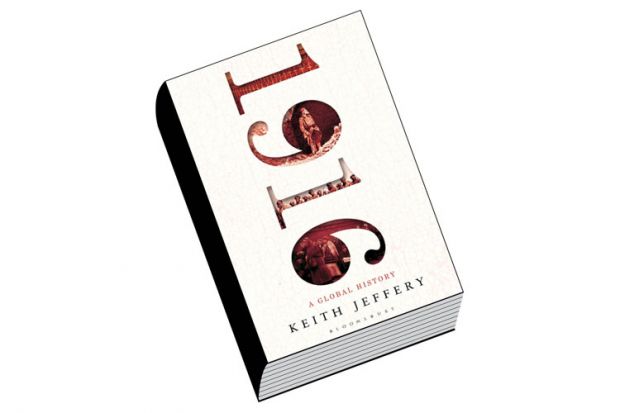What year marked the great watershed of the early 20th century? Many would plump for 1914, but Keith Jeffery, in this wide-ranging book, makes a strong case for 1916 as the year that not only changed the nature of the Great War but also had a far-reaching effect on world history.
He discusses the battles and major events of the year and introduces such less well-known developments as the revolts and inter-ethnic violence that took place in the Caucasus and Central Asia, exploring their significance both at the time and in subsequent decades. Each chapter is discrete, but linked by its relevance to overarching themes: how the combatant powers withstood the test of war, why mounting casualties did not lead to peace, and the global impact of the war. Whether the war was a global conflict or a war between European powers, which affected other parts of the world, is debatable, but Jeffery demonstrates that what happened in 1916 had great implications for the future development of regions far from the war’s front lines.
Jeffery begins with the Gallipoli campaign, where the successful evacuation of Allied forces in January saw the end of that doomed attempt to escape from what had become a static war on the Western Front. He points to the significance of the campaign as a potent symbol for the awakening of Australian and New Zealand national feeling, adding, however, that, although the valour of the Anzac forces was unquestionable, “the majority of the troops at Gallipoli were not just British, but English”. It was, of course, in Europe that the greatest battles of the year were to take place: the Somme, Verdun, five of the 12 battles of the Isonzo that were fought between Italy and Austria-Hungary, and the Brusilov offensive on the Eastern Front. The casualties suffered by each side in what had become a war of attrition were enormous, and Jeffery’s accounts are illuminated by the experiences of individual soldiers.
It was not only on land that the outcome of the war would be decided, for Britain depended upon its naval supremacy for its protection against invasion, its ability to mount an economic blockade, and for keeping the sea lanes open. The Battle of Jutland in May had, thus, enormous significance and Jeffery describes the clash of capital ships, with a particular emphasis upon the role naval intelligence played in the battle, before going on to discuss the threat of submarine warfare, already on the rise in 1916 before its intensification the following year.
Why, after appalling casualties had been suffered by all combatant powers, did the war continue? Proposals for peace were made, yet the British reaction to the losses on the Somme produced not a widespread rejection of the war but “a grim determination that the matter should be seen through to the finish”, while German reactions to its losses were broadly similar. The strains of war did, however, begin to tell on several of the combatants. The Russian Empire and multi-ethnic Austria-Hungary were eventually to fail the test of total war, while the patriotism of Italian soldiers had to be reinforced by the draconian penalties for desertion or surrender imposed by their commanders, and even the French army was never quite the same fighting force after Verdun. Nor was Britain immune to internal unrest, and one of the strengths of Jeffery’s commendable book is its treatment of the diverse and often contradictory Irish reactions to the war: the wide support for it in 1914, the large number of Irish in the British army, the bravery of the 36th (Ulster) Division at the Somme, and the Easter Rebellion.
A. W. Purdue is visiting professor in history, Northumbria University. He is author, most recently, of The First World War (2015).
1916: A Global History
By Keith Jeffery
Bloomsbury, 448pp, £25.00
ISBN 9781408834305
Published 8 October 2015




